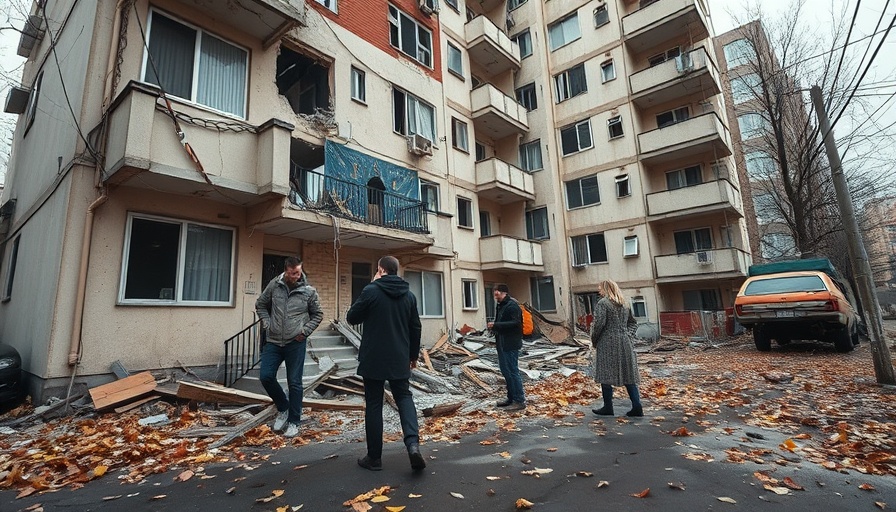
Russian Drone Attack in Kyiv: An Examination of the Assault
Kyiv residents woke to the sound of explosions as Russian drones launched an attack that targeted civilian infrastructure and left seven people injured. Onlookers described a scene of chaos as fragments from the drones caused a massive fire in an apartment building, leaving many families in distress as they rushed to safety.
The Immediate Impact: Lives Disrupted
The attack, which happened during the early hours when families would typically still be resting, highlights the ongoing violence in the region. Eyewitness reports indicate that the drone fragments not only damaged the apartment building significantly but also shattered windows of nearby structures, indicating a wide-reaching impact, even beyond the primary target.
This attack adds to the alarming trend of targeted strikes by unmanned aerial vehicles, raising questions about air defense capabilities in urban settings. During the fallout, emergency responders worked tirelessly to evacuate residents and treat the injured, showcasing the community's resilience in the face of danger.
A Broader Context: Tensions Escalate
This drone strike is not an isolated incident but part of a larger pattern of militaristic aggression that reflects the ongoing conflict between Russia and Ukraine. Since the invasion began, drone technology has played a critical role in warfare, changing how battles are fought, particularly in urban environments where civilian casualties can be substantial.
Experts note that as drone warfare becomes more prevalent, the necessity for improved air defense systems grows. Nations worldwide are now contemplating how to safeguard their cities from similar threats, as urban centers increasingly become the battlefield.
Future Considerations: Implementing Better Defense Strategies
In light of these events, military strategists suggest that it’s critical for affected countries to invest in robust aerial defense technology. This includes systems capable of neutralizing drone threats before they can reach densely populated areas. Additionally, strengthening international cooperation to address such threats can lead to more effective protective measures.
Human Interest: The Struggles of civilians
While the geopolitical implications of these drone attacks are crucial, it is vital to remember the human stories behind the statistics. Families whose homes have been damaged must navigate the turmoil of displacement, fear, and uncertainty. Community centers are becoming refuges for those affected, illustrating the human tendency to gather and support one another in times of crisis.
This aspect of the conflict often gets overshadowed by broader analysis and numbers, but it is these individuals who bear the brunt of such military tactics.
What Lies Ahead: Rebuilding and Recovery
The path to recovery post-attack is fraught with challenges, yet the spirit of Kyiv's citizens may provide a beacon of hope. Local organizations are mobilizing to provide support to those affected, offering everything from psychological help to assistance with rebuilding efforts.
As conflict continues, understanding the profound personal impact of warfare is essential. Not just for policymakers, but for all of us who can then extend empathy and support to those whose lives have been derailed by such violence.
Conclusion: A Call for Solidarity
The drone attack on Kyiv's apartment building amplifies the ongoing conversation about warfare, civilian safety, and the future of urban resilience in conflict zones. As the world watches, it becomes increasingly important that we advocate for solutions that prioritize the safety of civilians and work towards peace.
Stay informed about this evolving situation and consider how we, as global citizens, can support efforts for peace and safety in regions troubled by war.
 Add Row
Add Row  Add
Add 



Write A Comment